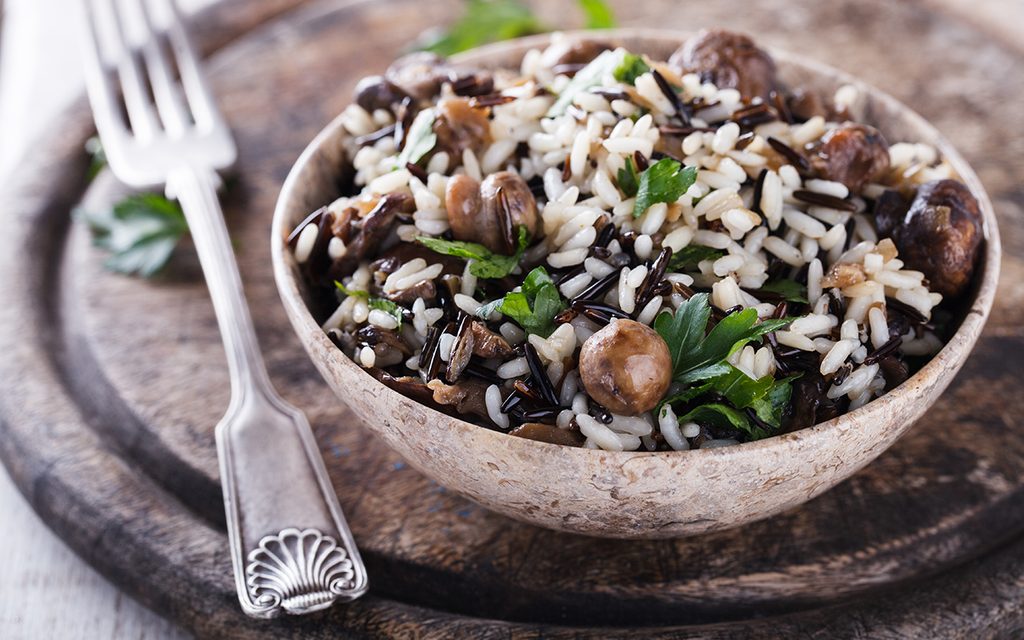Is Wild Rice Healthy? Here’s the Scoop, According to a Nutritionist.
Updated: Jan. 26, 2021

Is wild rice healthy? Absolutely! This native grain packs a powerful nutritional punch. Go grab a bowl and let's break down the health benefits .
Wild rice is a freshwater grass that has been gaining popularity in recent years—and for good reason. It’s often assumed wild rice is a member of the rice family because of its name and shape; however, this nutrient-rich grain is a step above basic rice varieties. It boasts a unique, rich and nutty flavor, making it the perfect star of a dish, like in this Cranberry Wild Rice Pilaf.
But is wild rice good for you? As the grain gains popularity, research is starting to emerge. Here’s what we know:
The Health Benefits of Wild Rice
It’s nutrient dense.
With 3 grams per cooked cup, wild rice is stout in fiber—and it even counts as a whole grain! (Which is important because research has shown a positive association with consumption of whole grains and a decreased risk of developing Type 2 diabetes.) Plus, one cooked cup of wild rice packs in 7 grams of protein and only 0.6 grams of fat. Wild rice is also a lower glycemic food than other grains, but it’s important to remember that 1 cup still has 35 grams of carbohydrates. If you’re watching your carb intake, only serve up ⅓ to ½ cup of rice at a meal.
It’s heart healthy.
Wild rice shows great potential in lowering cholesterol and fighting arterial plaque build up, too. Although the research is still in the animal phase, the initial outcomes are promising. The grain boasts a healthy dose of phytosterols, which are known to lower cholesterol. Additionally, the fiber content makes this grain worthy in fighting heart disease.
It’s loaded with antioxidants.
The dark color of wild rice is evidence of its antioxidant potential. In fact, wild rice has the powerful antioxidant apigenin, which has shown interesting results in anti-cancer research. Pair this dark grain with other superfoods for a healthful meal.
The Drawbacks of Wild Rice
It may contain pesky toxins.
Although very rare, wild rice can be a host to ergot toxin, which can be spotted in grains that have a pink or purplish spots. Before cooking, check your rice for any questionable grains and remove them right away. The remaining batch is safe to eat.
It’s potentially high in heavy metals.
We’ve all heard about arsenic in rice, and wild varieties are no exception. But soaking wild rice can help remove some of the heavy metals. We recommend immersing the grain in water overnight (or up to 24 hours) before cooking. You can practice this technique with other rice varieties, too.
It has a long cook time.
This chewy grain cooks similarly to brown rice. And the traditional preparation can take up to 45 minutes! Save time by using a pressure cooker. This handy appliance helps you put grains on the table in in just 15 minutes. Bonus: for added flavor, cook wild rice in beef, chicken or vegetable stock.
The Verdict
With all this information, you’re likely wondering, “So, is wild rice good for you?” Well, if you’re planning on dishing up a bowl of white rice, the answer is yes. But wild rice is a pretty fair swap for brown rice. Any dietitian will tell you it’s always a good idea to have variety in your diet, and wild rice is a great whole grain to start adding to your menu.
Next, learn how to cook wild rice the right way.
